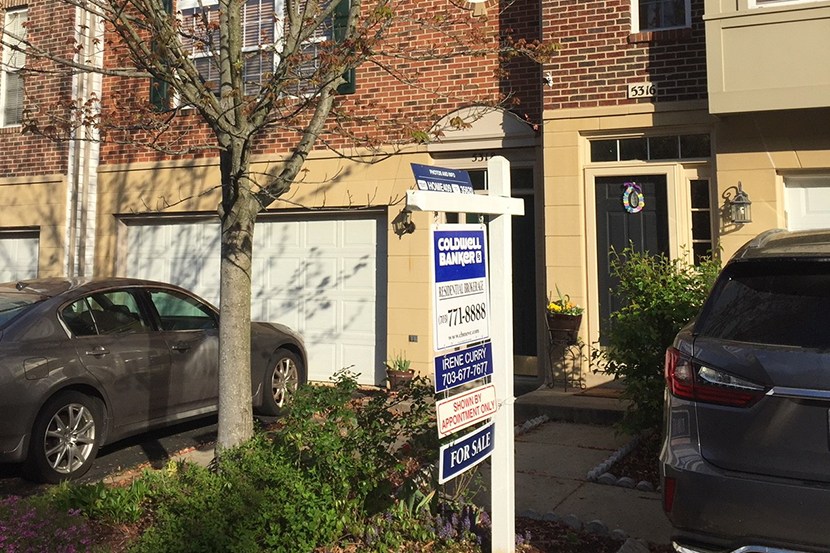
March Existing Home Sales Fall—But Worst Is Yet to Come

After a promising start to the spring home-buying season, existing home sales tumbled in March to a nearly five-year low, the National Association of Realtors reported yesterday—and because of the coronavirus pandemic, the outlook for April isn’t any better.
NAR said March existing home sales fell by 8.5% from February to a seasonally adjusted annual rate of 5.27 million in March. Despite the decline, overall sales increased year-over-year for the ninth straight month, up 0.8% from a year ago (5.23 million).
Single-family home sales fell to a seasonally adjusted annual rate of 4.74 million in March, down from 5.16 million in February, but up by 1.3% from a year ago. The median existing single-family home price jumped to $282,500 in March, up 8.0% from a year ago. Existing condominium and co-op sales fell to a seasonally adjusted annual rate of 530,000 units in March, down 11.7% from February and down 3.6% from a year ago. The median existing condo price rose to $263,400 in March, an increase of 7.9% from a year ago.
All four regions saw monthly declines in sales, although prices increased. Sales in the South dropped 9.1% to an annual rate of 2.29 million in March, but improved by 0.9% from the same time a year ago. The median price in the South rose to $245,100, a 7.5% increase from a year ago. Sales in the West fell by 13.6% to an annual rate of 1.08 million in March and fell by 0.9% from a year ago. The median price in the West rose to $420,600, up 8.0% from a year ago.
Sales in the Northeast fell by 7.1% to an annual rate of 650,000 and fell by 3 percent from a year ago. The median price in the Northeast rose to $300,400, up 8.3% from a year ago. Sales decreased by 3.1% in the Midwest to an annual rate of 1.25 million but rose by 4.2% from a year ago. The median price in the Midwest rose to $219,700, a 9.7% increase from March 2019.
“COVID-19 took the air out of the accelerating housing recovery,” said Mark Vitner, Senior Economist with Wells Fargo Securities, Charlotte, N.C. “Sale closings lag signed contracts by a month or two, meaning the freeze in showings and contracts will show up in the April and May data.”
Vitner said even before stay-at-home orders became widespread in mid-March, plunging equity markets and mounting recession fears likely sidelined some potential buyers. “April will show a much more precipitous decline, as it was extremely difficult to show a home and listings plummeted,” he said.
Still, Vinter said, the outlook is less gloomy. “Even though mass layoffs will thin the pool of prospective homebuyers, we see housing faring better than many other sectors, given the persistently low inventories,” he said. “While realtors will have to work through a dry spell, home sales should provide at least a modest spark to the broader recovery.”
“Unfortunately, we knew home sales would wane in March due to the coronavirus outbreak,” said Lawrence Yun, NAR chief economist. “More temporary interruptions to home sales should be expected in the next couple of months, though home prices will still likely rise.”
While sales have declined, home prices continued to rise. The median existing home price for all housing types in March jumped to $280,600, up 8.0% from a year ago ($259,700), as prices increased in every region. March’s national price increase marks 97 straight months of year-over-year gains.
Total housing inventory at the end of March rose to 1.50 million units, up 2.7% from February, but down 10.2% from one year ago (1.67 million). Unsold inventory sits at a 3.4-month supply at the current sales pace, up from three months in February and down from the 3.8-month figure from a year ago.
“Earlier in the year, we watched inventory gradually tick upward but with the current quarantine recommendations in place, fewer sellers are listing homes, which will limit buyer choices,” Yun said. “Significantly more listings are needed and more will come on to the market once the economy steadily reopens.”
The report said properties typically remained on the market for 29 days in March, seasonally down from 36 days in February, and down from 36 days a year ago. Fifty-two percent of homes sold in March were on the market for less than a month.
NAR said first-time buyers were responsible for 34% of sales in March, up from both 32% in February and 33% a year ago. Individual investors or second-home buyers purchased 13% of homes in March, down from both 17% in February and 18% a year ago. All-cash sales accounted for 19% of transactions in March, down from both 20% in February and 21% in March 2019. Distressed sales represented 3% of sales in March, up from 2% in February, and unchanged from a year ago.
